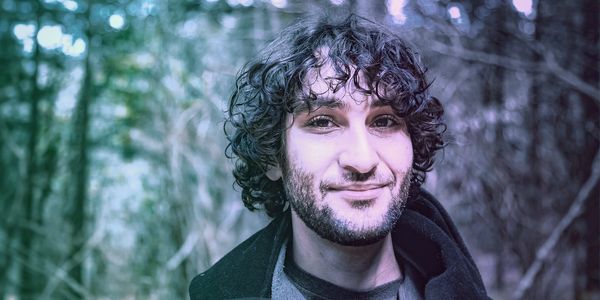Jon Brooks • • 15 min read
26 Scientifically Proven Superhuman Benefits of Meditation

I have a confession to make…
I know meditation is meant to be good for you but I don’t meditate every day.
I go through cycles of meditating 20 minutes a day and then slowly ‘forget’ and slide into not meditating until I feel I need to — until I feel like crap.
Sound familiar?
But recently things have been different.
For the last 30 days I’ve meditated for 25 minutes in the morning, 25 minutes in the evening and taken multiple 5 minute mindfulness breaks throughout the day.
I’ve written posts on the myths of motivation in the past going into the science of what makes people tick, but what I didn’t mention is what I believe the ultimate motivator is: reasons to act.
Simple I know, but when you have enough reasons to do something, motivating yourself to do it becomes a non-issue — this is why I tell everyone to read a book on a habit they want to change.
Bombarding your brain with reasons to act makes motivation easy.
I didn’t eat any vegetables until I was 20. I read a book on the benefits of healthy eating and I’ve eaten them every day since. “Vegetables are good for you” is not a good reason to eat them.
But after I read that book I had so many compelling reasons to eat nutritionally dense food it was harder not to. The same goes for any habit.
Want to give up smoking? How many books on anti-smoking have you read?
I decided to take this ‘bombard your brain’ approach with meditation. For the last few months I’ve researched countless books, studies, and lectures to find out the benefits of meditation and now I’m going to share these 26 Scientifically Proven Superhuman Benefits of Meditation with you!
*Spoiler alert* Meditation really can make you superhuman.
Convinced? Read Our Ultimate Beginners Guide to Meditation
The Mind of a Meditator
In Social Psychologist Daniel Goleman’s book Destructive Emotions, he recounts his experience of performing the first scientific studies on the mind of a mediator. Among the scientists present were Richie Davidson, a neuroscientist, and Paul Ekman – one of the worlds leading researchers on emotions.
The Dalai Lama himself, who helped this meeting of the minds between East and West, said of it, “I want to put everything under scrutiny, what doesn’t work, even if it was there for thousands of years we’ll take out.”
He gave the scientists his right hand man Lama Oser to study — a European monk with over 30 years of meditative experience.
They tested him on various parameters.
This is where our story of the superhuman benefits of meditation begins.
Breathe in.
1. Insane Equanimity and Wellbeing
The first thing they looked at was Lama Oser’s left-to-right prefrontal cortex activity ratio. People who are happier tend to have a higher left-to-right ratio in terms of brain activity, more neural pathways on the left side of the prefrontal cortex than on the right side.
The happier you are the larger that ratio is. Also, left-to-right ratios predicts how quickly you will recover from stresses both psychologically and physically.
Lama Oser’s ratio was measured and compared to a sample of 175 people. He was quite literally off the chart.
This off the chart prefrontal cortex activity ratio asymmetry suggests insane levels of equanimity, well-being and resilience to setbacks.
But this is not the only thing they looked at in Lama Oser…
2. Body Language Expertise
Paul Ekman has revolutionised the way we understand emotions and facial expressions. The lead character in the TV show ‘Lie To Me‘ was based on him and his research. Ekman was the first person to discover what he coined micro expressions — fleeting millisecond expressions that reveal our true emotions.
Ekman has tested hundreds of people on their ability to detect these subtle expressions from FBI agents to clinical psychologists and college students. When they tested Lama Oser nobody could have predicted the results.
Lama Oser was the best at detecting these subtle expressions Ekman had ever recorded.
Ever.
Along with body language expertise this tells us two further superhuman traits Lama Oser had.
3. Empathic Intelligence
The ability to recognise emotions in other people is associated with levels of empathy. If Lama Oser was the best at detecting these micro expressions they’ve ever tested, by default, he also had more empathy than any other person they’ve ever tested.
4. Super Fast Cognitive Functioning
Empathy alone wouldn’t have helped him notice these super fast micro expressions. They last sometimes hundredths of a second. Lama Oser’s mind must have been sharp, focused and fast to catch them and process them. Faster that anyone else’s they tested.
5. No Startle Response
Paul Ekman has been studying the startle response in people for decades. The startle response is what happens if something loud or surprising happens to us suddenly. I’m sure you’ve experienced it. We blink for a millisecond; it’s an innate reaction.
They find it in every single person. Even in policemen and women. They practice their shooting all the time, constantly, yet every time the gun goes off they blink slightly – they startle. Everyone has a startle response.
Or so they thought…
Lama Oser was the first person in recorded history to suppress his startle response. When he is meditating, he is so relaxed, so focused on whatever he’s meditating on that nothing startles him.
Because there is a strong correlation between levels of anxiety and how easily somebody startles, the implications for this are huge.
6. Negotiation Expertise
Practicing meditation didn’t just affect Lama Oser, it also influenced everyone he interacted with. They did this experiment where they had him sit down with Western scientists and talk about controversial issues such as why scientists should give up science and become monks and reincarnation.
He interacted with two people. The first was a chilled out scientist. They both had a good chat and remained calm. Then they brought in the second scientist and they picked this scientist because he was extremely contentious, harsh and intolerant. I guess they were just curious what would happen.
Here is what that argumentative scientist had to say after the discussion:
“I couldn’t be confrontational. I was always met with reason and smiles. It’s overwhelming. I felt something like a shadow or aura and I couldn’t be aggressive.”
The scientist was calm and friendly, something totally unexpected. Lama Oser’s levels of equanimity rubbed off on him. Emotions are contagious.
But what does this prove? It’s fantastic and shocking but do we also have to meditate for 30 years to reap similar benefits?
Let’s find out.
7. Less Anxiety
There are a few problems with the Lama Oser studies. The sample size was very small. The study showed correlation not causation (perhaps it was genetics), and well, the guy was a monk. We don’t all have 30 years to spare.
This is where Jon Kabat-Zinn comes in.
Jon Kabat-Zinn came up with an experimental design that had a control group and an experimental group. The control group signed up to a mindfulness meditation program but remained on the waiting list. The experimental group, who were compared to the control group, did a meditation program.
The program was 8 weeks long. They meditated on average for 45 minutes a day, they did a little bit of yoga, mindful breathing, body scans and had workshops talking to them about meditation.
In this experiment Jon Kabat-Zinn showed that the benefits of meditation don’t just apply to monks. In just 8 weeks, those who meditated achieved significant changes, both mentally and physically.
The first was a significant decrease in anxiety levels during the program and after compared to the control group.
8. Better Mood
The scanned the participant’s brains in the Jon Kabat-Zinn study. Like Lama Oser their left-to-right prefrontal cortex activity ratio changed compared to the control group.
Their positive emotions increased and their negative emotions decreased.
9. Stronger Immune System
Jon Kabatt-Zinn also injected participants with a cold virus to see how their immune system would respond. Those who were in the program had a stronger immune response and recovered faster.
The benefits of meditation are not just psychological, but physical.
The Lama Oser experiments and the Jon Kabat-Zinn experiment made the world, and the science community, start to take notice. From here on out I’m going to list some really unexpected superhuman benefits of meditation.
10. Improved Decision-Making
Imagine you are betting money on a slot machine. You allow yourself to spend $50. Even though after an hour of betting you haven’t won a dime, you’ve repeatedly come close to winning the $10,000 jackpot. Problem is, you’ve just spent your fiftieth dollar.
Seen as you’ve already spend so much time and money, rather than let it all go to ‘waste’, perhaps you should spend another $10 to at least recoup your losses. Somebody has to win, right?
This type of thinking is irrational (easy to say that when it’s not you) and known to the critical thinking crowd as the sunk-cost fallacy. It’s a subtle form of cognitive distortion that negatively affects our decision-making. Whether it’s putting more money into a failing business or simply deciding to endure a film you’re not enjoying because you’ve paid for it.
But we can get around it.
With just one 15-minute focused-breathing meditation we can de-bias our brains and make smarter decisions. By bringing our attention into the present moment we can think clearly about our decisions and avoid ruminating on past events, which can distort our thinking.
11. Slowdown Neurodegenerative Diseases
A pilot study led by researchers at Beth Israel Deaconess Medical Center suggests that the brain changes associated with meditation and stress reduction may play an important role in slowing the progression of age-related cognitive disorders like Alzheimer’s disease and other dementias.
After an 8 week mindfulness based stress reduction program the Alzheimer’s patients who took part showed less cognitive decline than the control group.
They also reported higher levels of wellbeing, which in turn also improves recovery.
12. Enhanced Creativity
The two main ingredients of creativity are divergent thinking — coming up with lots of ideas — and convergent thinking, solidifying those ideas into a single ‘aha moment‘.
Cognitive psychologist Lorenza Colzato and her fellow researchers at Leiden University performed a study looking at the effects of two different types of meditation practices on divergent and convergent thinking.
Meditation improved convergent and divergent thinking. Interestingly, the type of meditation had an impact on which type of creative thinking was most improved. Free association meditation improved divergent thinking more that focused attention meditation.
13. Accelerated Learning
George Mason University professor Robert Youmans and University of Illinois doctoral student Jared Ramsburg asked a selection of students to meditate before a lecture and compared their test results with a control group who didn’t meditate.
They found that not only did the short meditation help students focus and retain the lecture information better, it also served as a good predictor of who would pass and who would fail
Meditation helps you learn faster.
14. Lower High Blood Pressure
Roughly 1 in 3 Americans have high blood pressure. Having high blood pressure increases one’s chances of developing heart disease, stroke, congestive heart failure and kidney disease.
A meta-analysis of nine randomised trials conducted at the University of Kentucky showed that Transcendental Meditation (repeating a mantra) was the equivalent of adding a second anti-hypertension agent to one’s routine but without the side effects.
They compared Transcendental Meditation to other relaxation techniques but found that Transcendental Meditation was the only intervention that significantly lowered high blood pressure. I suspect that other forms of meditation will yield similar results but we need more research to really find out.
15. Increase Attention Span
Anyone who has ever meditated knows that focusing on one thing for any amount of time is harder than it seems. From the outside, sitting in a quiet room and placing one’s attention on the breath seems easy. There is a reason why buddhists refer to meditation as ‘training the mind.’
In one of the most comprehensive meditation studies to date, a group of researchers took 60 participants and split them in half — one became the control group, the other went on a three-month meditation retreat. The ones who went on the retreat showed continuous improvements on a difficult 30 minute attention test compared to the non-meditators and the results lasted for five months after the retreat.
Meditation improves your ability to concentrate and hold your attention on boring stimulus. This ties into accelerated learning and productivity.
16. Less Loneliness
Feelings of loneliness and social isolation are damaging to our physical and mental health, especially in older adults.
In a study at Carnegie Mellon University’s J. David Creswell, looking at 40 older adults, they found that just 30 minutes of meditation a day for eight weeks not only decreased feelings of loneliness but also reduced the risk of inflammatory diseases.
Creswell added “It’s important to train your mind like you train your biceps in the gym.”
17. Combat Cravings and Addictions
My philosophy when it comes to changing habits is to approach them side-on. For example, if one wants to become more productive, instead of trying to force yourself to work longer and harder hours, strategic breaks might help them more.
If someone wants to lose weight, before giving them a diet and workout plan I ask them to simply start weighing themselves every morning and recording the results. Every wave starts as a ripple.
Researchers at the University of Oregon put this ripple philosophy to the test. They sought volunteers interested in reducing stress and improving their performance. In actuality, the experiment was designed to explore how meditation would impact smoking behaviour. Unbeknownst to the participants, it did — they curtailed their smoking by 60%.
The meditation didn’t force participants to give up smoking; it simply improved their levels of self-control and emotional regulation. It changed their habits side-on.
18. Higher Pain Threshold
A study conducted at the University of Montreal compared 13 Zen meditators, all of who had at least 1,000 hours of practice, with a control group of non-meditators to see whether regular meditation practice would effect the perception of pain.
They tested the subject’s pain response using a calibrated heated rod on their calfs. The zen meditators experienced overall 18% less pain.
An extreme example of the insane equanimity meditation can provide in the face of extreme pain can be found in this shocking image of a Vietnamese monk who, historically, didn’t move or scream out once during his self-immolation.
But you don’t have to meditate for thousands of hours to reduce the sensation of pain. A brief intervention of 20 minutes of meditation for three days has been shown to have lasting pain-reducing effects.
19. Post Traumatic Stress Disorder (PTSD)
Our brain’s plasticity is a gift that allows us to continuously improve and expand our horizons. The flip side is that under certain conditions our brains can change in an instant, and for the worse. This is essentially what post traumatic stress disorder — a stress so significant, our psyche literally and instantly rewires our neural pathways into a disempowering configuration. Meditation can help reverse this.
A new collaborative study from the University of Michigan Health System and the VA Ann Arbor Healthcare System shows that veterans with PTSD who completed an 8-week mindfulness-based group had significant PTSD improvements compared to the control group. 73 percent of patients in the mindfulness group displayed meaningful improvement compared to 33 percent in the treatment-as- usual groups.
Another soldier focused study looking exclusively at the preparation and recovery of war situations corroborated the benefits of meditation on PTSD, anxiety and depression.
20. Deeper Sleep
In a study done on 11 insomnia patients aged 25-45, relaxation techniques performed in the day were shown to improve the quality of their sleep at night.
Sleep latency, total sleep time, total wake time, wake after sleep onset, sleep efficiency, sleep quality and depression improved in patients who used meditation.
21. Improved Hearing
In a study conducted at the University of Oregon music students were given a 15 minute guided meditation before listening to a 10 minute excerpt of Giacomo Puccini’s opera ‘La Boheme’. Their peak experiences and ‘flow’ were measured and compared to a control group who didn’t receive the meditation.
Overall, 97 percent of the participants who meditated had either one or several moments of flow or aesthetic response. Of the 69 subjects who engaged in mindfulness, 64 percent thought the technique had enhanced their listening experience.
Attention is manipulable. By training our mind to be present we can listen to what is actually there instead of listening to what we expect to be there.
22. Visuospatial Memory
When we glance at an object our mind can only retain the image for a few seconds. That’s why artists constantly look back and forth every few seconds when they draw. There are, however, stories of monks who are said to be able to hold complex images in their minds for minutes at a time.
In 2009 a study looking at whether visuospatial memory can be improved was carried out. Those practicing Deity Yoga, where they hold an image in their mind, where shown to have ‘significant’ improvements in their visuospatial memory following their meditation practice. More research needs to carried out to see how other forms of meditation effect visuospatial processing.
If the enhanced creativity, decision making and attention span wasn’t enough to get artists and engineers meditating, hopefully this will.
23. Compassionate Mind
No superhuman would be complete without improved compassion.
When the Dalai Lama first visited the Western world he was shocked to find that our understanding of the word ‘compassion’ tends to refer to acts of kindness only towards others. The buddhist word for compassion, karuṇā, means compassion both for yourself and to others. The Dalai Lama thought it was ridiculous that someone could hope to be truly compassionate towards others if they didn’t first feel compassionate towards themselves.
Books like The Compassionate Mind by Prof. Paul Gilbert go into detail on how compassion is an essential component of happiness, self-esteem and a fulfilling life.
The good news is that we can all become more compassionate. In a study performed at Northeastern University College of Science showed that even a brief meditation intervention made their participants 50% more compassionate.
24. Turn Down Distractions
Researchers from Massachusetts General Hospital (MGH), Harvard Medical School and the Massachusetts Institute of Technology report that meditation helps increase alpha waves in the brain — a wave that turns down the volume on distracting information.
If you find yourself easily distracted by trivial things, meditation practice will help you focus your attention and zone out competing stimuli.
25. Autonomic Nervous System Control
Your autonomic nervous system is out of your conscious control — it’s involuntary. You can’t tell your immune system how much it should respond to a particular threat any more than you can consciously digest your food. But then again not all of us have spent years of our lives meditating like Wim Hof, aka The Iceman.
Wim Hof can withstand cold temperatures that would kill an ordinary person. To find out how, Dr. Peter Pickkers and his team at the Radboud University Nijmegen Medical Centre measured Hof’s immune response after being injected with bacteria during his meditation. He was able to suppress his immune response by 50% compared to the other 240 participants studied. He also had hardly any flu-like symptoms and had decreased inflammation.
Wim Hof really is a superhuman. He claims its due to his meditation practice.
26. Clearer Skin
New research is coming to out that shows stress might have more of a hand in skin conditions such as acne and psoriasis than previously thought. We know that meditation is one of the best ways of reducing stress, therefore it can indirectly help reduce inflammation in the skin.
Scientifically Proven Superhuman Benefits of Meditation Conclusion
I’ve listed 26 superhuman benefits of meditation. The truth is I could have listed a 100. There are new studies constantly coming out showing how meditation can improve our lives and the people we come into contact with.
Meditation has been around for 2,500 years but was never taken seriously until a small group of positive psychologists had the courage to break the mould and put these ancient ideas to the test.
Even though I write about a variety of topics at Comfort Pit, I class my site primarily as a positive psychology site because at the heart of positive psychology is the idea that we can look at the most incredible individuals in the world in hopes to incorporate a little bit of that incredibleness into our own lives.
With meditation you can do this. Start today.
Breathe out.
This post is republished with permission of the original author.
This original can be found at ComfortPit.com

Jon Brooks
Jon Brooks is a Stoicism teacher and, crucially, practitioner. His Stoic meditations have accumulated thousands of listens, and he has created his own Stoic training program for modern-day Stoics.










